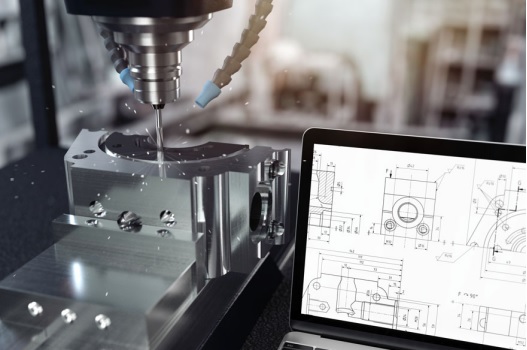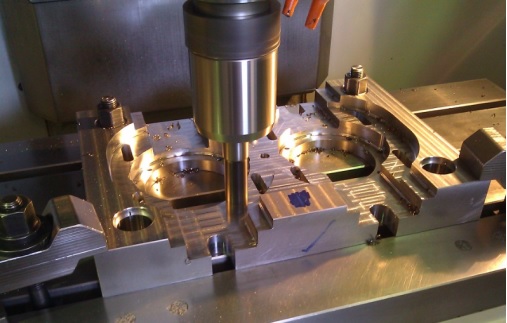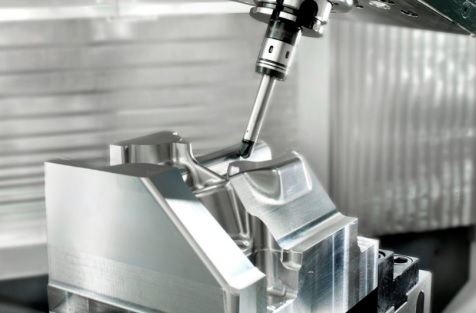What are the Main Function of CNC Milling Machine?
NC (Numerical Control) technology is using the digital information composed of values and symbols to automatically control the operation of the machine tool. Compared with the traditional machine tool relying on the operator to manipulate the handle for processing, the CNC machine tool relies on the control information sent by the NC system to control the movement of each axis of the machine tool in a pulse manner to process the contour shape of the part. Therefore, the accurate control and processing of complex two-dimensional and three-dimensional parts can be easily realized on CNC machine tools by using 2-axis, 3-axis, even 4-axis and 5-axis linkage. It is difficult to operate on traditional machine tools and is difficult for operators. The experience and technical requirements are higher. Traditional machining requires the operator to always focus on the movement of the machine tool and make appropriate handle manipulation in time; after the first piece of CNC machining is verified, the processing process almost no longer requires intervention, freeing the operator from the shackles and can be used to prepare for other production preparations Work, save human resources and improve production efficiency. CNC machining technology has been rapidly popularized and rapidly improved. At present, the NC machine in service are generally CNC (Computer Numerical Control) CNC machine, such as CNC milling machine.

Since the birth of CNC machining technology, it has been widely used in the field of mechanical processing: such as CNC lathes, CNC boring and milling machines, CNC grinding machines, CNC punching machines, CNC cutting machines, CNC electrical discharge (wire cutting) machines, CNC laser processing machine tools, etc. Turning, CNC boring and milling, and CNC wire EDM are the main forces of CNC machining. CNC machine tools are the basic components of flexible production lines and unattended workshops.
A milling machine is a machine tool that mills a workpiece with a milling cutter. Milling machine in addition to milling the plane, grooves, teeth, threads and spline shaft, but also more complex processing of the surface, the efficiency of high planer, in the machinery manufacturing and repair sector is widely used. This article mainly introduce the main function and application of CNC milling machine.

Main function of CNC milling machine
The functions of CNC milling machines of different grades are quite different, but they should have the following main functions:
1. Linear interpolation: one of the most basic functions of CNC milling.
2. Circular interpolation: one of the most basic functions of CNC milling.
3. Fixed cycle: The fixed cycle refers to the organic composition of the system developed by the system developer, which is a parameterized processing subroutine used to simplify programming and is applied in a fixed instruction format. It is mainly used to realize some typical Need to repeat the processing operations many times, such as the processing of various holes, threads, grooves, etc. The use of fixed cycles can effectively simplify the preparation of programs.
4. Tool compensation: generally include tool radius compensation, tool length compensation, tool position compensation function, etc.
Tool radius compensation-plane contour machining
Tool length compensation-set tool length
5. Mirror, rotation, zoom, and translation:
Mirror, rotate, zoom, and translate the processing program through the machine tool CNC system to simplify programming.
6. Automatic acceleration and deceleration control:
The machine tool automatically adjusts the feed speed when the tool changes the direction of movement, maintains a good processing state, and avoids situations such as tool deformation, damage to the workpiece surface, and unstable processing speed.
7. Data input and output and DNC functions:
CNC milling machines generally input and output data through the RS232C interface, including machining programs and machine tool parameters. When the executed processing program exceeds the storage space, DNC processing should be adopted, that is, the external computer directly controls the CNC milling machine to process.
8. Subroutine function:
For the processing actions or processing areas that need to be repeated multiple times, it can be programmed into a subprogram, which is called when the main program needs it, and multi-level nesting of subprograms can be realized to simplify the programming of the program.
9. Self-diagnosis function:
Self-diagnosis is the self-diagnosis of the CNC system during operation. It is an important function of the CNC system and has an important role in the maintenance of CNC machine tools and debugging of programs.
10. User macro function:
Use variables in the program to achieve program functions by assigning and processing variables. This kind of program with variables is called a macro program. Macro program programming can further improve and expand the performance of CNC milling machine.

What is CNC milling machine used for?
CNC milling machines are currently mainly used in the mold industry, small batch parts processing, product trial production, reducing or even eliminating special tools, fixtures, measuring tools and special tools. The main processing contents are:
1. Flat parts:
Parts with a flat surface or a flat surface are called plane parts. The processing characteristics of this type of parts are: they can generally be processed by two coordinate linkages, and their CNC milling is relatively simple.
2. Surface parts:
Parts with a spatial surface that cannot be flattened are called curved parts, and their processing characteristics are: any way of processing, the milling cutter and the surface of the part are always in point contact.
3. Variable bevel parts:
The parts that can not be formed into a flat surface, but there are straight prime lines are called variable bevel parts. Its processing characteristics are: during circumferential milling, the contact between the processed surface of the part and the cylindrical surface of the milling cutter can be a straight line.
4. Holes and threads:
Use fixed size tools for drilling, expanding, reaming, boring and tapping, etc. Generally, CNC milling has boring, drilling and reaming functions.


